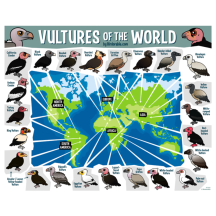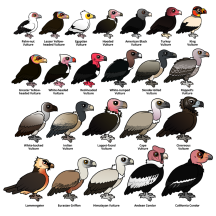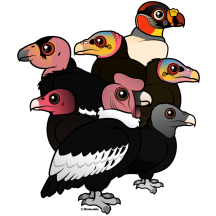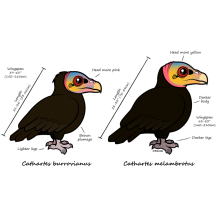Greater Yellow-headed Vulture
About the Greater Yellow-headed Vulture
Also known as: Forest Vulture

The Greater Yellow-headed Vulture is a New World bird that lives across parts of Central and South America. They are also known as Forest Vultures and are very closely related to the Lesser Yellow-headed Vulture.
Greater Yellow-headed Vultures roost on dead tree limbs. Their preferred habitat is forest, which is not suprising when you consider their alternate name.
Greater Yellow-headed Vultures do not build nests. They may use a scrape-type substrate or lay their eggs on the ground or on rocky surfaces like cliffs or caves.
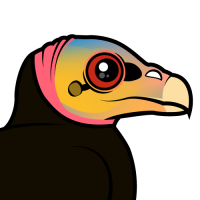
Find cute products & gifts with our Birdorable Greater Yellow-headed Vulture
Details & Statistics
Added to Birdorable
Hatched August 22, 2012
Scientific Name
Cathartes melambrotus
Bird Family
Measurements
Length:
2.3 to 2.7 feet
(71.1 to 83.8 cm)
Wingspan:
5.2 to 6.9 feet
(1.6 to 2.1 meters)
Weight:
2.6 to 7.1 pounds
(1.2 to 3.2 kilos)
Range
International Names

Brazilian
Urubu-da-mata

Chinese
大黄头美洲鹫

Czech
kondor větí

Danish
Stor Gulhovedet Grib

Dutch
Grote Geelkopgier

Finnish
amazoniankondori

French
Grand Urubu

German
Großer Gelbkopfgeier

Italian
Avvoltoio testagialla maggiore

Japanese
オオキガシラコンドル [ookigashirakondoru]

Norwegian
Skogkondor

Polish
sepnik zóltoglowy

Russian
Большая желтоголовая катарта

Spanish
Aura Selvática

Swedish
Större gulhuvad gam














